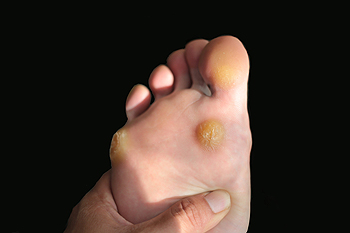 Plantar warts develop on the bottom of the feet. They grow into the sole of the foot as pressure is endured from walking during the day, and can cause severe pain and discomfort. They appear as small, hardened areas, and may have black dots in the center. These develop as a result of blood vessels that grow inside the wart. Plantar warts are caused by a virus that lives and thrives in warm and moist environments. These types of places can include public swimming pools, shower room floors, and locker rooms. Patients who have a weakened immune system may be prone to getting plantar warts, in addition to people who have a history of developing this type of wart. It is suggested that you speak to a podiatrist if you have a plantar wart, who can determine what the best course of treatment is for you.
Plantar warts develop on the bottom of the feet. They grow into the sole of the foot as pressure is endured from walking during the day, and can cause severe pain and discomfort. They appear as small, hardened areas, and may have black dots in the center. These develop as a result of blood vessels that grow inside the wart. Plantar warts are caused by a virus that lives and thrives in warm and moist environments. These types of places can include public swimming pools, shower room floors, and locker rooms. Patients who have a weakened immune system may be prone to getting plantar warts, in addition to people who have a history of developing this type of wart. It is suggested that you speak to a podiatrist if you have a plantar wart, who can determine what the best course of treatment is for you.
Plantar warts can be very uncomfortable. If you need your feet checked, contact Dr. Steven Shlonsky from Louisville, Kentucky. Dr. Shlonsky will assist you with all of your foot and ankle needs.
About Plantar Warts
Plantar warts are the result of HPV, or human papillomavirus, getting into open wounds on the feet. They are mostly found on the heels or balls of the feet.
While plantar warts are generally harmless, those experiencing excessive pain or those suffering from diabetes or a compromised immune system require immediate medical care. Plantar warts are easily diagnosed, usually through scraping off a bit of rough skin or by getting a biopsy.
Symptoms
Treatment
To help prevent developing plantar warts, avoid walking barefoot over abrasive surfaces that can cause cuts or wounds for HPV to get into. Avoiding direct contact with other warts, as well as not picking or rubbing existing warts, can help prevent the further spread of plantar warts. However, if you think you have developed plantar warts, speak to your podiatrist. He or she can diagnose the warts on your feet and recommend the appropriate treatment options.
If you have any questions please feel free to contact our office located in Louisville, KY . We offer the newest diagnostic and treatment technologies for all your foot and ankle needs.
 Athlete’s foot is a contagious condition, and as its name suggests, is often common among those who participate in sporting activities. Athlete’s foot can be identified by a few different symptoms. These indicators may include cracking or peeling blisters between the toes, redness and scaling on the soles of the feet, rashes and bumps on the feet, and itchiness. Even though the name is athlete’s foot, this condition can develop for anyone. Not wearing the proper footwear in warm and moist environments can lead to developing athlete's foot, as that is where fungi tend to thrive. These environments can include public swimming pools, communal showers, gyms, and locker room floors. If you believe you have developed athlete’s foot, it is suggested that you seek the help of a podiatrist for proper and professional care.
Athlete’s foot is a contagious condition, and as its name suggests, is often common among those who participate in sporting activities. Athlete’s foot can be identified by a few different symptoms. These indicators may include cracking or peeling blisters between the toes, redness and scaling on the soles of the feet, rashes and bumps on the feet, and itchiness. Even though the name is athlete’s foot, this condition can develop for anyone. Not wearing the proper footwear in warm and moist environments can lead to developing athlete's foot, as that is where fungi tend to thrive. These environments can include public swimming pools, communal showers, gyms, and locker room floors. If you believe you have developed athlete’s foot, it is suggested that you seek the help of a podiatrist for proper and professional care.
Athlete’s foot is an inconvenient condition that can be easily reduced with the proper treatment. If you have any concerns about your feet and ankles, contact Dr. Steven Shlonsky from Louisville, Kentucky. Dr. Shlonsky will treat your foot and ankle needs.
Athlete’s Foot: The Sole Story
Athlete's foot, also known as tinea pedis, can be an extremely contagious foot infection. It is commonly contracted in public changing areas and bathrooms, dormitory style living quarters, around locker rooms and public swimming pools, or anywhere your feet often come into contact with other people.
Solutions to Combat Athlete’s Foot
Athlete’s foot can cause many irritating symptoms such as dry and flaking skin, itching, and redness. Some more severe symptoms can include bleeding and cracked skin, intense itching and burning, and even pain when walking. In the worst cases, Athlete’s foot can cause blistering as well. Speak to your podiatrist for a better understanding of the different causes of Athlete’s foot, as well as help in determining which treatment options are best for you.
If you have any questions please feel free to contact our office located in Louisville, KY . We offer the newest diagnostic and treatment technologies for all your foot and ankle needs.
 Toenail fungus is an unsightly foot condition that develops as a result of a fungal infection. This is considered to be contagious, and can be found in warm and moist environments. These often include public swimming pools, communal shower room floors, and locker rooms. Additionally, patients may develop this condition from having pedicures with tools that may not be properly disinfected. Existing medical conditions may lead to developing toenail fungus, which may consist of having diabetes, or a compromised immune system. If a toenail injury has occurred, it may weaken the nail, which may make it prone to contracting a fungus. Common symptoms that are associated with this ailment can include the toenail becoming thick and yellowed, and in severe cases, it may become brittle and fall off. It is suggested that if you see symptoms of a toenail fungus developing, that you speak to a podiatrist who can properly treat this condition.
Toenail fungus is an unsightly foot condition that develops as a result of a fungal infection. This is considered to be contagious, and can be found in warm and moist environments. These often include public swimming pools, communal shower room floors, and locker rooms. Additionally, patients may develop this condition from having pedicures with tools that may not be properly disinfected. Existing medical conditions may lead to developing toenail fungus, which may consist of having diabetes, or a compromised immune system. If a toenail injury has occurred, it may weaken the nail, which may make it prone to contracting a fungus. Common symptoms that are associated with this ailment can include the toenail becoming thick and yellowed, and in severe cases, it may become brittle and fall off. It is suggested that if you see symptoms of a toenail fungus developing, that you speak to a podiatrist who can properly treat this condition.
For more information about treatment, contact Dr. Steven Shlonsky of Louisville, Kentucky. Dr. Shlonsky can provide the care you need to keep you pain-free and on your feet.
Toenail Fungus Treatment
Toenail fungus is a condition that affects many people and can be especially hard to get rid of. Fortunately, there are several methods to go about treating and avoiding it.
Antifungals & Deterrence
Oral antifungal medicine has been shown to be effective in many cases. It is important to consult with a podiatrist to determine the proper regiment for you, or potentially explore other options.
Applying foot powder on the feet and shoes helps keep the feet free of moisture and sweat.
Sandals or open toed shoes – Wearing these will allow air movement and help keep feet dry. They also expose your feet to light, which fungus cannot tolerate. Socks with moisture wicking material also help as well.
If you have any questions please feel free to contact our office located in Louisville, KY . We offer the newest diagnostic tools and technology to treat your foot and ankle needs.
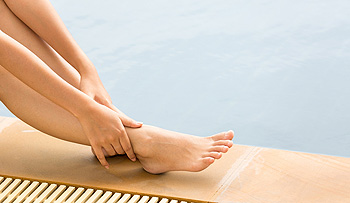 Taking care of your feet is an important routine for all ages and should be done on a regular basis. Foot pain can develop due to a variety of reasons, including ill-fitting footwear, obesity, pregnancy, or because of an existing foot condition such as flat feet. To help combat foot discomfort, consider routinely pampering your feet. This can help soothe any pain you may be experiencing. A foot bath with warm water and epsom salts is a relaxing way to help soothe aching or sore muscles. If you find yourself dealing with swollen feet, make sure the water is cool before soaking. Practicing feet stretches, as well as exercising your ankles, toes, and calves, can help overstressed muscles in your feet. Trimming your toenails on a regular basis and applying moisturizer can help avoid the development of an ingrown toenail, as well as cracked heels. For more advice on how to best take care of your feet, it’s suggested that you consult with a podiatrist.
Taking care of your feet is an important routine for all ages and should be done on a regular basis. Foot pain can develop due to a variety of reasons, including ill-fitting footwear, obesity, pregnancy, or because of an existing foot condition such as flat feet. To help combat foot discomfort, consider routinely pampering your feet. This can help soothe any pain you may be experiencing. A foot bath with warm water and epsom salts is a relaxing way to help soothe aching or sore muscles. If you find yourself dealing with swollen feet, make sure the water is cool before soaking. Practicing feet stretches, as well as exercising your ankles, toes, and calves, can help overstressed muscles in your feet. Trimming your toenails on a regular basis and applying moisturizer can help avoid the development of an ingrown toenail, as well as cracked heels. For more advice on how to best take care of your feet, it’s suggested that you consult with a podiatrist.
Everyday foot care is very important to prevent infection and other foot ailments. If you need your feet checked, contact Dr. Steven Shlonsky from Louisville, Kentucky. Dr. Shlonsky can provide the care you need to keep you pain-free and on your feet.
Everyday Foot Care
Often, people take care of their bodies, face and hair more so than they do for their feet. But the feet are a very important aspect of our bodies, and one that we should pay more attention to. Without our feet, we would not be able to perform most daily tasks.
It is best to check your feet regularly to make sure there are no new bruises or cuts that you may not have noticed before. For dry feet, moisturizer can easily be a remedy and can be applied as often as necessary to the affected areas. Wearing shoes that fit well can also help you maintain good foot health, as well as making it easier to walk and do daily activities without the stress or pain of ill-fitting shoes, high heels, or even flip flops. Wearing clean socks with closed shoes is important to ensure that sweat and bacteria do not accumulate within the shoe. Clean socks help to prevent Athlete’s foot, fungi problems, bad odors, and can absorb sweat.
If you have any questions please feel free to contact our office located in Louisville, KY . We offer the newest diagnostic and treatment technologies for all your foot and ankle needs.
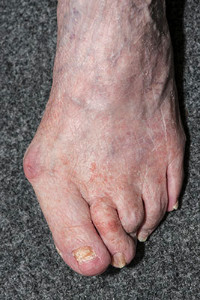 A common sign that you may have developed a bunion is by a bump that gradually forms on the side of the big toe. Additionally, it may appear red, swollen, and can cause severe pain and discomfort. The reasons that a bunion may form can consist of wearing shoes that do not have ample room for the toes to move freely in, or from medical conditions such as arthritis, nerve damage, or due to flat feet. Additionally, genetics may also play a significant role in the development of a bunion, and research has indicated the chances may increase as the aging process occurs. Many patients that have bunions wear custom made orthotics, as this may help relieve a portion of the pressure while wearing shoes. In severe cases, if it becomes difficult to walk, surgery may be a necessary option that can permanently remove the bunion. If you feel you have developed a bunion, it is suggested that you schedule a consultation with a podiatrist who can help choose the best treatment option that is correct for you.
A common sign that you may have developed a bunion is by a bump that gradually forms on the side of the big toe. Additionally, it may appear red, swollen, and can cause severe pain and discomfort. The reasons that a bunion may form can consist of wearing shoes that do not have ample room for the toes to move freely in, or from medical conditions such as arthritis, nerve damage, or due to flat feet. Additionally, genetics may also play a significant role in the development of a bunion, and research has indicated the chances may increase as the aging process occurs. Many patients that have bunions wear custom made orthotics, as this may help relieve a portion of the pressure while wearing shoes. In severe cases, if it becomes difficult to walk, surgery may be a necessary option that can permanently remove the bunion. If you feel you have developed a bunion, it is suggested that you schedule a consultation with a podiatrist who can help choose the best treatment option that is correct for you.
If you are suffering from bunion pain, contact Dr. Steven Shlonsky of Louisville, Kentucky. Dr. Shlonsky can provide the care you need to keep you pain-free and on your feet.
What Is a Bunion?
Bunions are painful bony bumps that usually develop on the inside of the foot at the joint of the big toe. As the deformity increases over time, it may become painful to walk and wear shoes. Women are more likely to exacerbate existing bunions since they often wear tight, narrow shoes that shift their toes together. Bunion pain can be relieved by wearing wider shoes with enough room for the toes.
Causes
Symptoms
In order to diagnose your bunion, your podiatrist may ask about your medical history, symptoms, and general health. Your doctor might also order an x-ray to take a closer look at your feet. Nonsurgical treatment options include orthotics, padding, icing, changes in footwear, and medication. If nonsurgical treatments don’t alleviate your bunion pain, surgery may be necessary.
If you have any questions, please feel free to contact our office located in Louisville, KY . We offer the newest diagnostic and treatment technologies for all your foot care needs.
There is a portion of the foot that contains a narrow space which is located on the inside of the ankle. This is referred to as the tarsal tunnel. If this area becomes inflamed as a result of an injury, tarsal tunnel syndrome may develop. The symptoms that are often associated with this condition can include swelling, pain and discomfort surrounding the ankles, and patients may feel a tingling or burning sensation. Moderate relief may be found when the affected foot is taped, as this may help to keep it from moving. Additionally, wearing orthotic inserts may provide adequate cushioning as the healing process occurs. If you feel you have developed this condition, it is strongly suggested that you consult with a podiatrist who can offer you the correct treatment.
Tarsal tunnel syndrome can be very uncomfortable to live with. If you are experiencing tarsal tunnel syndrome, contact Dr. Steven Shlonsky of Louisville, Kentucky. Dr. Shlonsky can provide the care you need to keep you pain-free and on your feet.
Tarsal Tunnel Syndrome
Tarsal tunnel syndrome, which can also be called tibial nerve dysfunction, is an uncommon condition of misfiring peripheral nerves in the foot. The tibial nerve is the peripheral nerve in the leg responsible for sensation and movement of the foot and calf muscles. In tarsal tunnel syndrome, the tibial nerve is damaged, causing problems with movement and feeling in the foot of the affected leg.
Common Cause of Tarsal Tunnel Syndrome
The Effects of Tarsal Tunnel Syndrome
A physical exam of the leg can help identify the presence of tarsal tunnel syndrome. Medical tests, such as a nerve biopsy, are also used to diagnose the condition. Patients may receive physical therapy and prescriptive medication. In extreme cases, some may require surgery.
If you have any questions please feel free to contact our office located in Louisville, KY . We offer the newest diagnostic and treatment technologies for all your foot and ankle needs.
Excess uric acid in the bloodstream may produce a condition that is known as gout. It can cause pain and discomfort, and in severe cases, permanent joint damage may occur. Patients who have family members afflicted with gout may have an increased risk of developing this condition, in addition to those who practice unhealthy lifestyle habits. The common symptoms that are associated with this ailment can include pain in the joints of the big toe, swelling, redness, and it may be difficult to walk. Moderate relief may be found when the affected foot is elevated, and healthy eating habits are enforced. Research has indicated it may be beneficial to drink plenty of water daily, and the gout attacks may become less frequent when a gentle exercise routine is frequently practiced. If you have developed gout, it is advised that you schedule a consultation with a podiatrist who can properly treat this condition.
Gout is a painful condition that can be treated. If you are seeking treatment, contact Dr. Steven Shlonsky from Louisville, Kentucky. Dr. Shlonsky will treat your foot and ankle needs.
What Is Gout?
Gout is a form of arthritis that is characterized by sudden, severe attacks of pain, redness, and tenderness in the joints. The condition usually affects the joint at the base of the big toe. A gout attack can occur at any random time, such as the middle of the night while you are asleep.
Symptoms
Risk Factors
Prior to visiting your podiatrist to receive treatment for gout, there are a few things you should do beforehand. If you have gout you should write down your symptoms--including when they started and how often you experience them, important medical information you may have, and any questions you may have. Writing down these three things will help your podiatrist in assessing your specific situation so that he or she may provide the best route of treatment for you.
If you have any questions, please feel free to contact our office located in Louisville, KY . We offer the newest diagnostic and treatment technologies for all your foot care needs.
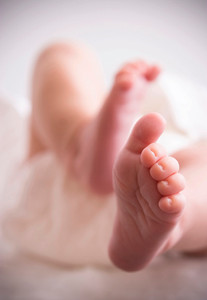 When it comes to caring for your child’s feet, it’s important you look for symptoms of any existing or developing foot conditions. One common condition that can develop among babies and young children is an ingrown toenail. Ingrown toenails are characterized by a toenail that grows into the skin on the side of the toe, often appearing red and swollen. Typically, it is more common that the big toe is affected by this condition. In more severe cases, a white or yellowish liquid may drain from the affected toe, which normally is a sign that an infection in present. To help prevent this condition from afflicting your child’s toes, it’s recommended that you make sure you’re cutting their toenails straight across and that they wear footwear that is not too constricting or tightly fitted. Ingrown toenails are often quite painful and should be treated with professional care. For a safe recovery, and to avoid the development of an infection, we suggest you consult with a podiatrist as soon as possible to treat your child’s ingrown toenail.
When it comes to caring for your child’s feet, it’s important you look for symptoms of any existing or developing foot conditions. One common condition that can develop among babies and young children is an ingrown toenail. Ingrown toenails are characterized by a toenail that grows into the skin on the side of the toe, often appearing red and swollen. Typically, it is more common that the big toe is affected by this condition. In more severe cases, a white or yellowish liquid may drain from the affected toe, which normally is a sign that an infection in present. To help prevent this condition from afflicting your child’s toes, it’s recommended that you make sure you’re cutting their toenails straight across and that they wear footwear that is not too constricting or tightly fitted. Ingrown toenails are often quite painful and should be treated with professional care. For a safe recovery, and to avoid the development of an infection, we suggest you consult with a podiatrist as soon as possible to treat your child’s ingrown toenail.
The health of a child’s feet is vital to their overall well-being. If you have any questions regarding foot health, contact Dr. Steven Shlonsky of Louisville, Kentucky. Dr. Shlonsky can provide the care you need to keep you pain-free and on your feet.
Tips for Keeping Children's Feet Healthy
If you have any questions, please feel free to contact our office located in Louisville, KY . We offer the newest diagnostic and treatment technologies for all your foot care needs.
 Foot pain may be a common ailment among elderly people. This may be a result of the amount of walking and running that has occurred during their lifetimes. It is beneficial if the soles of the feet are regularly checked by a podiatrist to determine if there are cuts on the feet that will not heal. The socks that are worn should fit correctly, be seamless, and be made of cotton, which is a breathable material. A podiatrist will trim the toenails correctly, which can be helpful if there are existing circulation issues. If you or an elderly relative needs help in caring for the feet, please consult with a podiatrist.
Foot pain may be a common ailment among elderly people. This may be a result of the amount of walking and running that has occurred during their lifetimes. It is beneficial if the soles of the feet are regularly checked by a podiatrist to determine if there are cuts on the feet that will not heal. The socks that are worn should fit correctly, be seamless, and be made of cotton, which is a breathable material. A podiatrist will trim the toenails correctly, which can be helpful if there are existing circulation issues. If you or an elderly relative needs help in caring for the feet, please consult with a podiatrist.
If you need your feet checked, contact Dr. Steven Shlonsky of Louisville, Kentucky. Dr. Shlonsky will attend to all of your foot and ankle needs and provide you with quality treatment.
Geriatrics and Podiatry
When people age, some common issues that may occur are bone density loss, dry skin, poor circulation, and rough brittle nails. These issues may also affect your foot health if the necessary steps are not taken to alleviate the problems.
It is important to take care of your feet because feet that are injured or diseased can affect your overall health. Having painful feet hinders your ability to do daily activities or may decrease your willingness to do the things that you need to do.
Visiting Your Geriatrician
As we age, health problems become more likely, so it is essential to visit your doctor for check-ups to ensure that you are doing the best you can to take care of your health. It is recommended to check your feet frequently for any possible cuts, bruises, swelling, corns or any other irregularities.
Taking Care of Elderly Feet
Cracked or dry feet can be treated by applying moisturizer often. It is also important not to wear old socks because the older the sock is, the higher the possibility there will be that there is bacteria there. Wear fresh socks and make sure they fit properly.
Proper foot health means that you can have a more active lifestyle and you will not be bogged down by pain. Foot health also leads to good circulation, which is paramount for overall health.
If you have any questions, please feel free to contact our office located in Louisville, KY . We offer the newest diagnostic tools and technology to treat your foot and ankle needs.
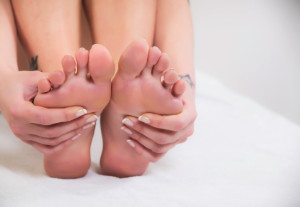 People who enjoy running are generally aware of the importance of having strong and stable feet. This can be accomplished by frequently performing stretching techniques that are designed to keep the feet flexible and strong. The feet are comprised of different types of muscles. Shorter muscles are known as intrinsic muscles, and are found inside the foot. They are responsible for moving the feet, and providing stability. A simple and effective movement known as toe curling can help to improve overall foot function. Additionally, the toes may become stronger when an effort is made to keep the big toe on the floor while lifting the other toes. Research has indicated the ankle will benefit when heel lifts are performed. If you would like more information about the importance of stretching the feet, or suggestions on specific foot stretches, please consult with a podiatrist.
People who enjoy running are generally aware of the importance of having strong and stable feet. This can be accomplished by frequently performing stretching techniques that are designed to keep the feet flexible and strong. The feet are comprised of different types of muscles. Shorter muscles are known as intrinsic muscles, and are found inside the foot. They are responsible for moving the feet, and providing stability. A simple and effective movement known as toe curling can help to improve overall foot function. Additionally, the toes may become stronger when an effort is made to keep the big toe on the floor while lifting the other toes. Research has indicated the ankle will benefit when heel lifts are performed. If you would like more information about the importance of stretching the feet, or suggestions on specific foot stretches, please consult with a podiatrist.
Stretching the feet is a great way to prevent injuries. If you have any concerns with your feet consult with Dr. Steven Shlonsky from Louisville, Kentucky. Dr. Shlonsky will assess your condition and provide you with quality foot and ankle treatment.
Stretching the Feet
Stretching the muscles in the foot is an important part in any physical activity. Feet that are tight can lead to less flexibility and make you more prone to injury. One of the most common forms of foot pain, plantar fasciitis, can be stretched out to help ease the pain. Stretching can not only ease pain from plantar fasciitis but also prevent it as well. However, it is important to see a podiatrist first if stretching is right for you. Podiatrists can also recommend other ways to stretch your feet. Once you know whether stretching is right for you, here are some excellent stretches you can do.
It is best to go easy when first stretching your foot and work your way up. If your foot starts hurting, stop exercising and ice and rest the foot. It is advised to then see a podiatrist for help.
If you have any questions, please feel free to contact our office located in Louisville, KY . We offer the newest diagnostic and treatment technologies for all your foot care needs.
Louisville Podiatry Office
149 Thierman Ln
Louisville,
KY 40207
Mon: 9:30 AM - 5:30 PM
Tues: 9:30 AM - 5:30 PM
Wed: 9:30 AM - 5:30 PM
Thur: 9:30 AM - 5:30 PM
Fri: 9:30 AM - 5:30 PM